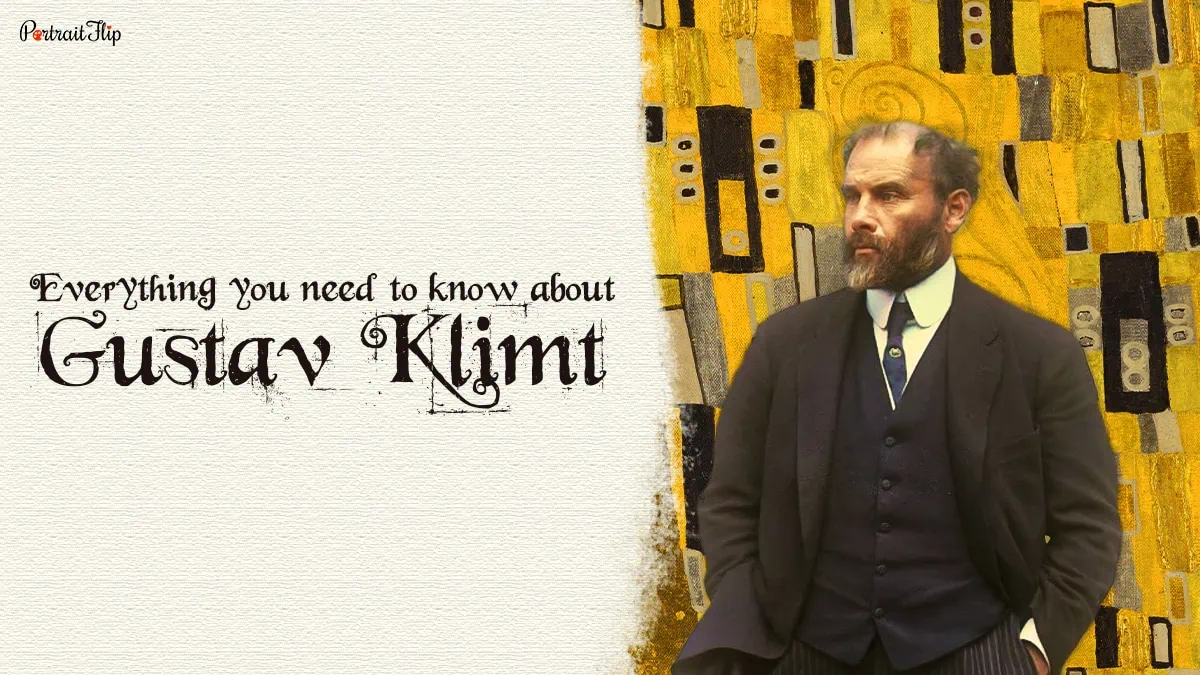We have all heard about the series of shimmering paintings by Gustav Klimt. From the “Woman in Gold” to the “Golden Tears”, everything is just too shiny.
But who exactly is Gustav Klimt? Why does he use so much gold and glitter to represent sadness?
Well, that is the case with all of artist Gustav Klimt’s artworks from his “Golden Phase”.
On one side you see grandeur, shimmer, and golden royalty, and on the other side, you see a dark symbolism looming over it.
Quite intriguing, right? I thought so too!
Gustav Klimt once said, “Art is a line around your thoughts.”
It simply means that one’s art is the reflection of their thoughts, of what they hold inside.
By studying and understanding Gustav Klimt, the artist, and his art, we will be entering a world of wonder, secrets, and the beauty of modern art!
To start with, let us look at some intriguing Gustav Klimt facts.
Suggested Read: About Pierre-Auguste Renoir
Table of contents
Some Interesting Gustav Klimt Facts
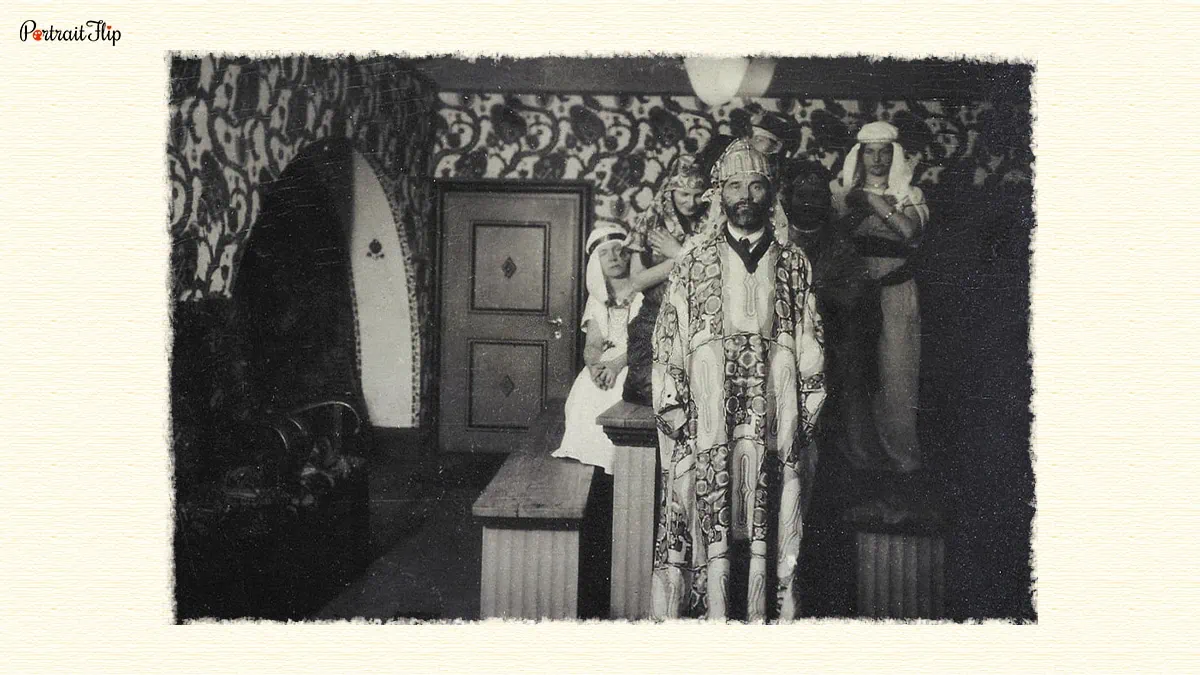
- One of his paintings, which was also the most expensive one, was Adele Bloch-Bauer I and Adele Bloch-Bauer II. Did you know that during World War II, it was stolen by the Nazis?
- Unlike many eminent artists out there, Gustav Klimt never painted a self-portrait. He believed that his face was not worthy to be the subject of his paintings, unlike the beautiful women who were his models!
- Our artist Klimt rarely ventured out of the city of Vienna despite being the man behind the renowned Vienna Secession.
- Although he was a bachelor and casanova throughout his life, he is known to be responsible for fathering 14 children. All these children are from his romantic affairs with his models and other women he encountered.
- Did you know that the artist who is known for using gold leaves on his portraits, started out very poor? Yes, Gustav Klimt could not afford to go to an art school. But he definitely did go on a full scholarship. His artistic talents were recognized from a young age itself.
- I saved the best for the last! Guess who Klimt shared interests with? A fellow brilliant contemporary from his time, “Sigmund Freud”. Just like Freud, Klimt showed a lot of interest in dreams, sexuality, and the human psyche.
Gustav Klimt’s Life and Death
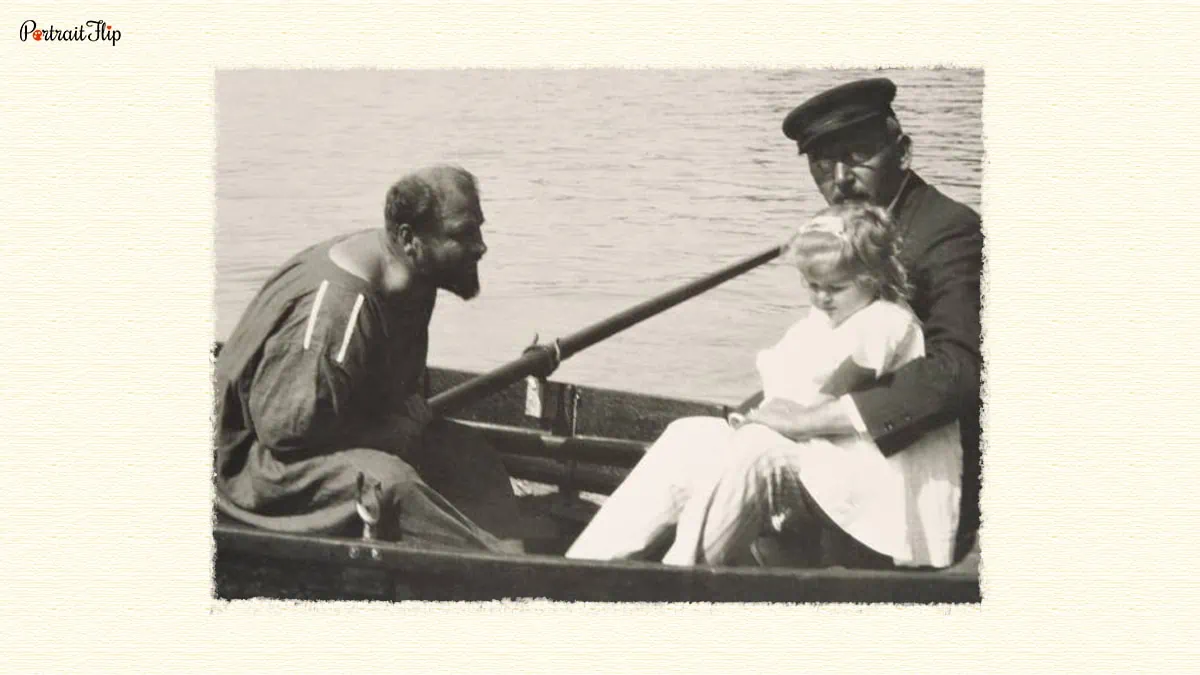
Why do you think knowing the life history of an artist is important?
Well, I believe that when you are someone who admires and studies art, there is a sense of never-ending curiosity. This comes from the urge of wanting to understand the art better.
Where else to go then, but to the artist himself?
When we learn and understand about the artist, we understand the experience and intent behind their art.
There is a sense of deeper connection that is possible because of this.
Would you have enjoyed Leonardo da Vinci’s famous painting Salvator Mundi if you did not know about the artist’s story behind it?
I think I have made my point! Without further ado, let us spend some time with Gustav Klimt’s biography.
Early Years
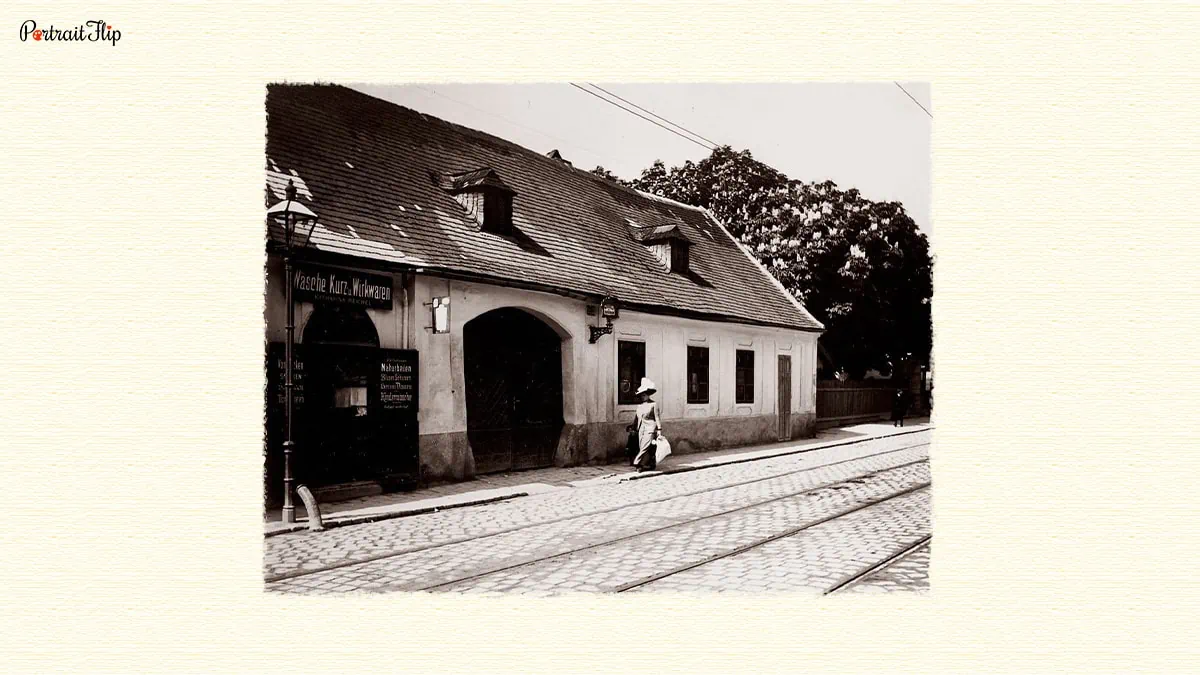
Our artist in focus, Gustav Klimt was born on 14th July 1862, in Vienna. He was the seventh child among his siblings, and they were all born into struggling poverty!
His father was a gold engraver, Ernst, and his mother, Anna, was a born musician with amazing talent.
Gustav Klimt’s inclination to the arts started at a very young age and was identified by people around him.
It is also because of this he joins an art school, with a full scholarship, at the young age of 14!
He joined the Vienna School and Arts and Crafts, which was a huge turning point in his poverty-stricken life!
Young artist Klimt was a diligent student who worked with intense care and effort. He was taught traditional and classical training in art.
His art was not meant to be confined within four walls.
Want more proof?
He showed immense interest in his studies of architectural paintings and excelled in that too. He was profoundly growing as an artist.
After completing his studies, Klimt along with his brother, who is also called Ernst, opens up an art studio. Their mutual friend Franz Masch also joins them, and soon they become the Company of Artists!
This little group collectively decided that they would focus on making one particular kind of art for one particular audience, that is, the elite classes.
The friends made the right decisions because their work started flourishing and commissions came in! They were assigned to paint theaters, churches, and some other places. As this was a group job, it became easy for the trio to work together on these projects.
Gustav Klimt along with his two companions even won the Golden Order of Merit in 1888 from Emperor Franz Josef I.
Middle Years
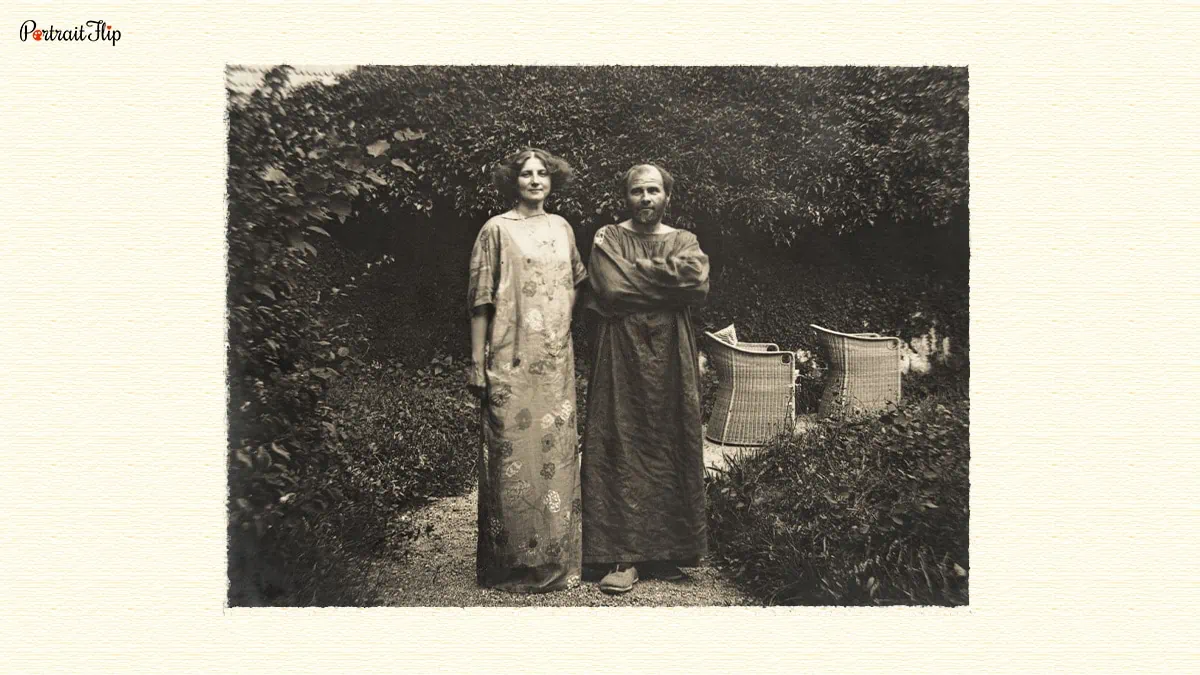
Gustav Klimt’s art and life were heavily influenced by one particular woman, Emilie Floge. Ernst married a woman called Helene Floge, and Emilie was her sister.
Emilie is known to be Klimt’s muse and favorite companion. Their friendship bloomed right after their first meeting when Gustav painted a portrait of her.
Although she had a strong and lasting effect on the art and life of Gustav Klimt, it is in fact a tragedy that it hit his artistic cords.
This tragedy hit him when he lost both his brother and father to death. Maybe it was a way he channeled his grief, or it was a reflection of his depressed mind. But the art he created from then on, had a monumental change!
It’s in this period you will see that he sought to make his style more personal. He showed denial and resistance to the mold he was trained in and chose something that reflected his own.
Grief Channeled Through Art
If you notice this new style of Gustav Klimt, it screams symbolism and also has many other influences!
With his brother’s passing, and his art experiencing a drastic change, the Company of Artists slowly dissolved. The group no longer reflected artist Gustav Klimt’s style and values.
This was in fact a new beginning for Klimt’s art because soon after that, he resigned his membership from the Vienna Artists’ Association.
Klimt found a few like-minded artists and together they formed a new organization called the Vienna Secession in 1897.
Hold your thought, because we’ll get into a thorough understanding of the Vienna Secession a little later!
Gustav Klimt was the first president of the organization and was also a part of the editorial team for Sacred Spring, their official magazine.
They encouraged each other to practice unique styles and support fellow artists!
Success Mixed with Controversies
Were you aware that Gustav Klimt’s paintings had interesting names such as Philosophy, Medicine, and Jurisprudence!?
If the names were such, you could only imagine how brilliantly his mind worked with his art.
Philosophy was one of the murals to be first exhibited in 1900 and then followed by Medicine and Jurisprudence. All these paintings had similar negative responses.
Why? The paintings portrayed raw and nude human forms, and when deciphered the paintings had a rather dark symbolism to them. This kind of imagery was detested and denied by the University authorities and faculty.
They even decided that these portraits could not be put up on their walls as they could be considered pornographic.
It is quite sad and shocking how for several years Gustav waited for his paintings to be exhibited in the University. But when they continued to reject him, he returned all the fees for his paintings and took back his artwork.
Frustrating, isn’t it? But you will be glad to know that even though his paintings were denied in Vienna, they were flourishing in Paris!
This was when the “Golden Phase” of Gustav Klimt came to its full glory! The most famous paintings during this peak phase were “Judith” which was made in 1901, “Danae” in 1907, and the most talked about masterpiece, “The Kiss” in 1908.
The early 1900s were really his years, don’t you think?
Late Years
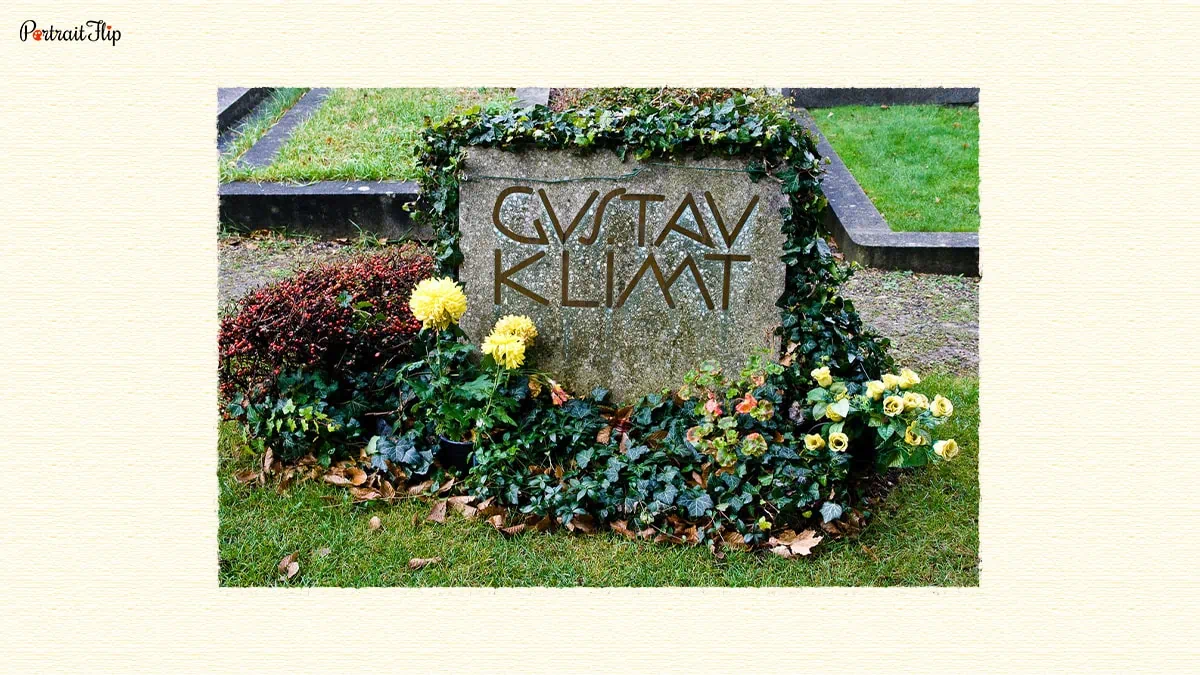
His landscape paintings are heavily influenced by the places he visited with Emilie during the summers.
The Vienna Secession experienced a split into two in 1905, and one of them was formed only around Klimt. In an exhibition in Rome, in 1911, his painting “Death and Life” was awarded first prize.
On an unfortunate day in January 1918, a stroke hit Gustav Klimt that partially paralyzed him and since then he was hospitalized. He was just 56 years old then.
His body weakened and he was infected with pneumonia, soon after which he passed away on 6th February 1918. This great artist rests in Vienna, in the Hietzing cemetery.
Artist Gustav Klimt’s death must have ended the creation of his extraordinary art, but to this day, his portrait paintings and art receives immense awe and adoration!
Suggested Read: 17 Famous Portrait Painters- Incredible Portraitists Who Reign The Art World!
Art and Other Accomplishments of Gustav Klimt
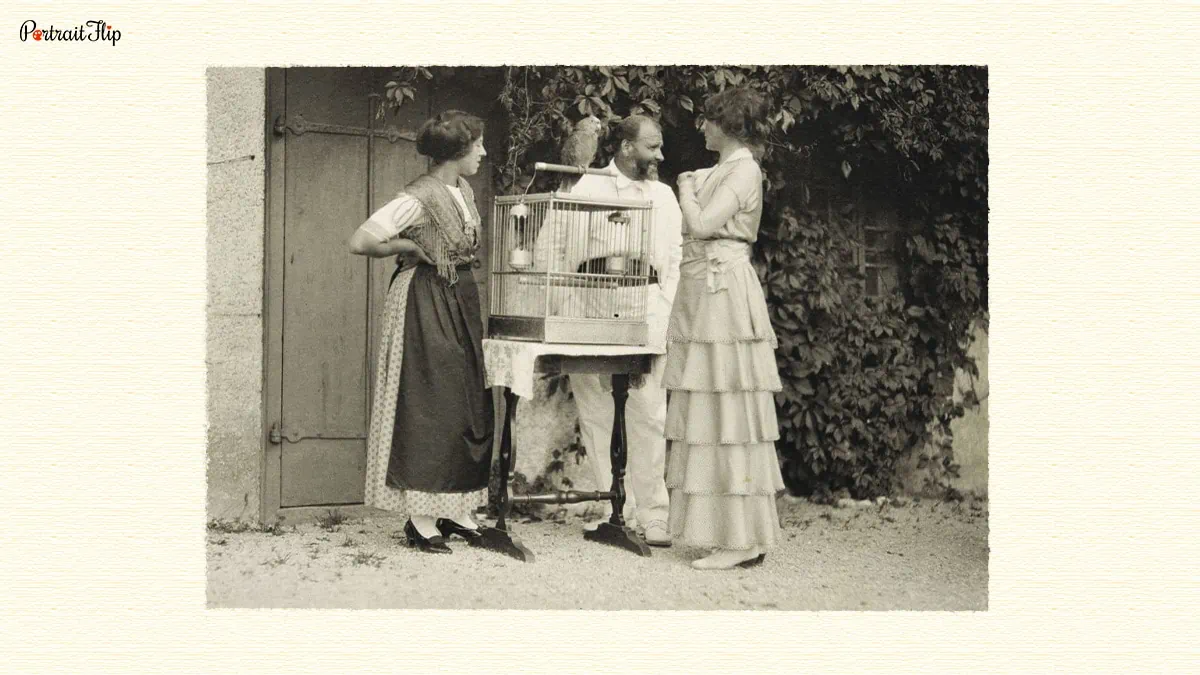
“Whoever wants to know something about me, they should look attentively at my pictures and there seek to recognise what I am and what I want.”
This brilliant Gustav Klimt quote says everything we need to know about his life is through his paintings! For him, everything was his art, not just as his passion, but also as a reflection of his life.
It is impossible to not look at Gustav Klimt’s art if you are studying his life because they are heavily intertwined!
Just like the “Starry Night” by Vincent Van Gogh has so much hidden within it about his personality, so does Gustav Klimt’s art!
Now, when we look at his life updates there are two events that stand out in his life as an artist, the Vienna Secession and the Golden Phase.
Let us look at the important significance Gustav Klimt carries with these two phases of his life.
What Role Did the Vienna Secession Play?
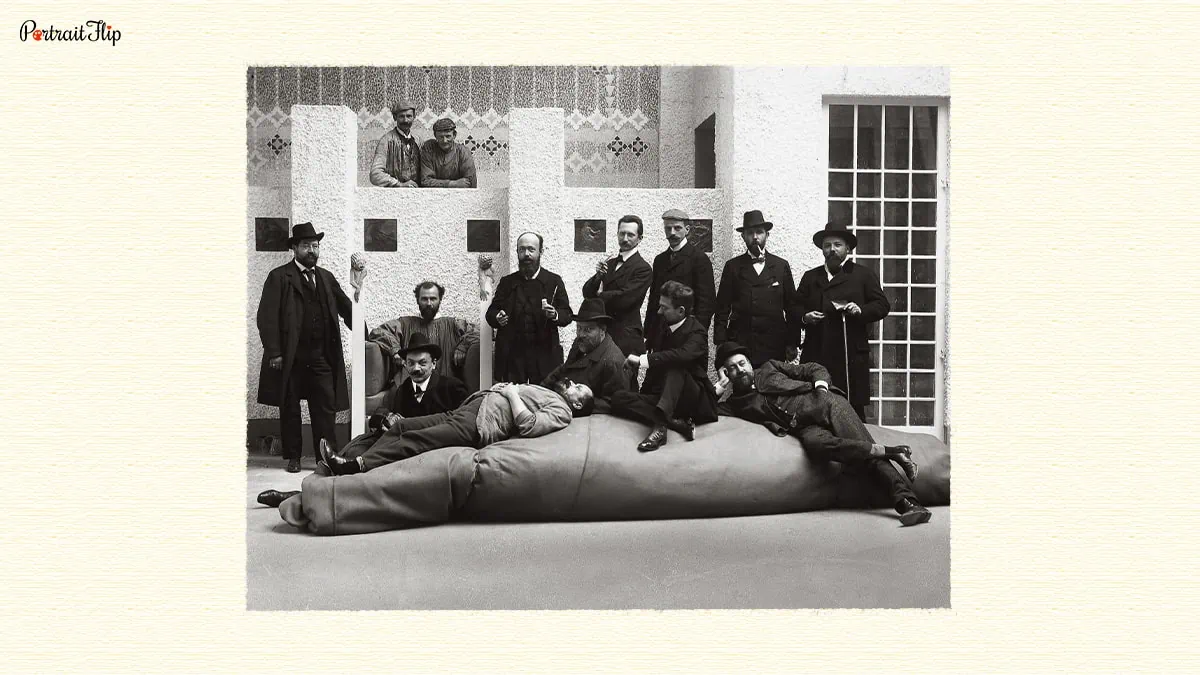
The Vienna Secession was founded soon after Gustav Klimt went through a tragic loss and there was a change in his art style. His art style became way more personal and depicted something even deeper: his thoughts and expressions.
The founding of the Vienna Secession Plan turned out to be the start of modern art in Austria in the nineteenth century!
All artists who were part of this organization worked together in creating art that was personal and non-traditional in nature.
This was important because Vienna then, was obsessively attached to their accustomed traditional ways that restricted freedom of creativity.
It is an organization that is one of a kind and stood with artists who wanted to try and create different contemporary styles. The art made here did not just include art, but also from other fields such as philosophy, medicine, and art.
The Vienna Secession was an art movement that fought against restrictive traditional art practices. The sole reason behind the Secession’s forming was for promoting contemporary art that is innovative! The artists worked on exchanging genres and
Suggested Read: Pop Art Movement: A Revolution Against Traditional Forms of Art
Gustav Klimt’s ‘Golden’ Phase
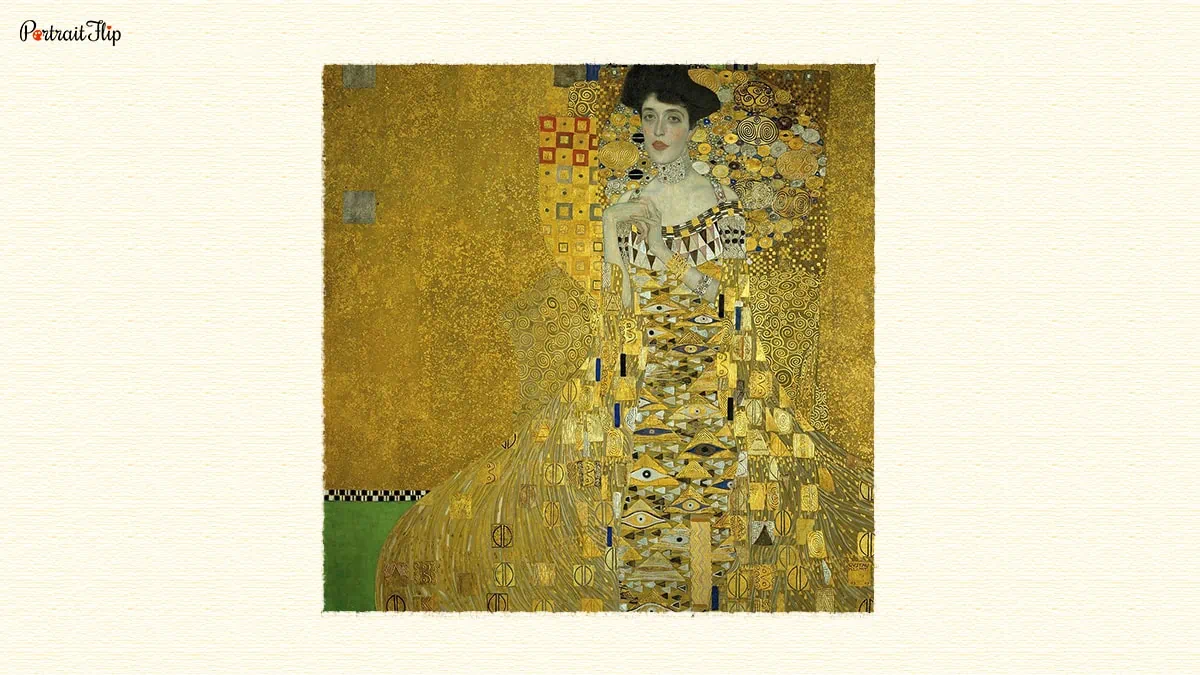
Have you come across Gustav Klimt’s ‘The Woman in Gold’, or ‘The Kiss’? What do you think of it? What is the one common thing that stood out in both paintings?
If you guessed the color scheme, then you got it absolutely right. Let us get into the depth of it;
If you go check out any of Gustav Klimt’s paintings from that era, you will identify the same color tones of gold and similar designs that seem to be intertwining with the rest.
How does he achieve this?
Using gold leaves on a two-dimensional painting! I don’t know about you, but I have definitely wondered why Klimt suddenly decided to use gold leaves in his paintings.
From what I could gather, remember how I mentioned that Klimt’s father, Ernst, was a gold engraver by profession.
Gustav Klimt turned to this contemporary style of art after his father’s death.
It makes me wonder if using the gold leaves has something to do with his father’s death and memories.
Maybe like a homage, a tribute, or even a way of grieving.
But whatever came out of this became a one-of-a-kind artwork that is still highly admired by people across the globe.
List of Golden Phase Paintings
Don’t you want to know which of Gustav Klimt’s paintings were from the Golden Phase? They are as follows;
- The Kiss
- The Three Ages of Woman
- Death and Life
- Judith I
- Portrait of Adele Bloch- Bauer or The Woman in Gold
Klimt gave birth to a type of modern art like never before. Filled with golden royalty, eroticism, women, symbolism, and charisma, he has won many hearts across the globe!
The Gustav Klimt Influence
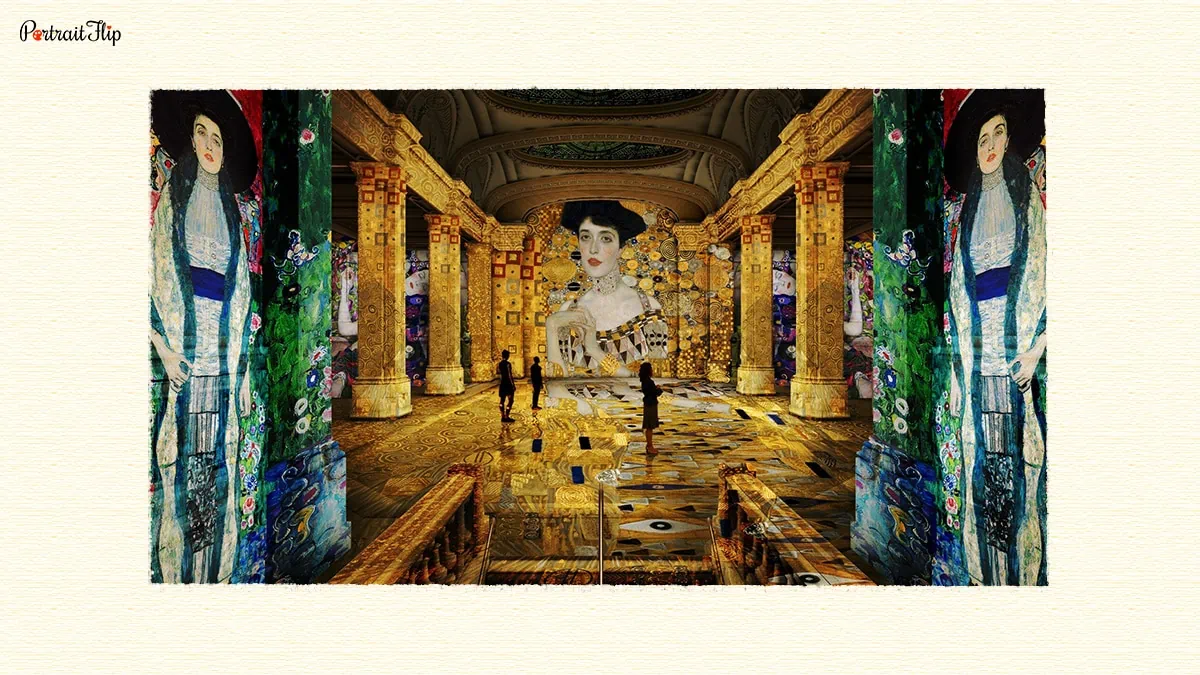
Gustav Klimt’s paintings are a personal favorite. It has in fact influenced my journey with art a lot. I am all about creating a grandeur piece that is unique and royal!
Just like me, there are several artists around the world who have been moved and influenced by this extraordinary artist!
His art continues to give people an immersive experience through several museums across the world. Some of the most famous museums where you can find Gustav Klimt’s famous paintings are the Austrian Gallery Belvedere, Leopold Museum, Secession, etc, all found in Vienna.
So, how did we at PortraitFlip get influenced by this great artist?
Gustav Klimt’s Reproduction Painting

Have you heard of the concept of Reproduction paintings?
If not, I am here to explain it to you.
We at PortraitFlip have a unique service of creating handmade replicas of your favorite famous paintings!
Our greatly skilled artists are well-equipped in creating a Gustav Klimt reproduction painting that will make your jaw drop!
Reproduction Paintings are a game changer in today’s world of digital art. It gives you the opportunity to embrace traditional art using modern tools.
Author’s Note
Hello Sweet Readers,
I had so much fun writing about the very interesting and talented artist, Gustav Klimt! Thank you for patiently reading this piece, I hope you enjoyed it too!
If you have any queries about the artist or our services, please feel free to convey your concern in the comment section below.
I will see you in the next one!
Cheers xx
How many paintings come in Gustav Klimt’s “Golden Phase”?
There are in total 24 paintings recognized to be in Gustav Klimt’s “Golden Phase”
Gustav Klimt suffered from a stroke at the age of 56 in February 1918, which left him partially paralyzed. Within a month, he was infected with pneumonia which caused his death.
No, they weren’t married, but they had a very strong relationship which was stated to be platonic. Emilie meant a lot to Klimt, and even in his last moments, it is said that he was asking for his dear companion Emilie.



